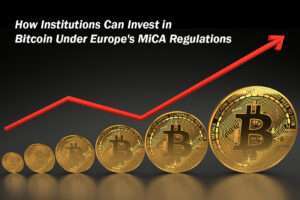Blockchain technology and Cryptocurrency both present tremendous opportunity and unavoidable regulatory ambiguity as this space experiences quick, intermittent development. One crucial piece of legislation regulates all businesses working in the European Union or targeting its market: Markets in Crypto-Assets (MiCA) regulation.
MiCA became a turning point for crypto services through its complete regulatory establishment for cross-bloc crypto-asset operations in Europe’s 27 members. Failure to recognise and properly prepare is necessary for businesses operating within or targeting this complex market to survive and succeed.
MiCA: A New Era for Crypto in Europe
Before MiCA entered into force, the EU crypto regulation space consisted of various distinctive national rules or no special ones. The then-market fragmentation prevented businesses from expanding their operations, while consumers lacked assurance about embracing new technological solutions.
MiCA achieves its goal by establishing a unified regulatory platform for crypto asset service providers operating throughout the EU. The uniform EU requirements for crypto-asset service providers enable pan-EU market participation and create better market conditions, better customer regulation, and financial stability.
Indeed, the implications are profound. MiCA establishes itself beyond typical bureaucratic legislation. The established framework will guide European crypto industry development for years to come. The new regulatory framework provides much-needed legitimacy to crypto assets, enabling institutional organisations and ordinary people to accept them as mainstream financial instruments.
What Investors Need to Understand
MiCA is a complex piece of legislation, but its core principles can be broken down into:
Authorisation and Licensing
To legally provide crypto-assets or access to associated services within the EU market, an entity must acquire authorisation approval from a designated national authority. Exchange services, custodians, and additional supporting providers must seek authorisation from relevant national authorities.
The application process demands proof of fulfilment of capital limitations, operational reliability standards, and anti-money laundering procedures. The authorisation process has barriers yet maintains operational standards that guarantee user security.
Consumer Protection
The safety of consumers stands as the primary concern under MiCA legislation. These regulatory rules establish standards for transparent business practice disclosure requirements and marketing communication instructions. All crypto-asset issuers must issue white papers that clearly show asset information, risk analysis, and explanations of ownership rights to their product holders.
Under these requirements, consumers gain sufficient details to help them make informed purchasing decisions when dealing with crypto. Under MiCA, the issuing organisations become responsible for any inaccuracies in their published white papers. The issuance of deceptive or insufficient information would lead to severe legal penalties.
Stablecoins
MiCA focuses on Stablecoins as a type of crypto-asset which strives to keep its value equal to traditional currencies or other assets. Because Stablecoins pose risks to financial stability, they must fulfil more strict requirements like operational limitations and complete reserve requirements.
The successful issuance of Stablecoins demands issuers keep enough liquid reserve assets to guarantee they can fulfil redemption orders. Stablecoin risk mitigation calls for strict requirements to ensure responsible ownership of crypto assets and their proper use.
Market Abuse
MiCA’s provisions stop market manipulation and insider trading activities involving crypto-assets. The crypto market governance protocol implements financial market-related standards that cement the crypto market integrity, which builds trust and helps attract institutional investors.
Environmental Sustainability
Also, MiCA set out proper requirements for assessing consensus mechanisms’ environmental impact, particularly those running on Proof-of-Work (PoW) systems. Under MiCA regulations, CASPs must report their energy usage and environmental impact to their clientele. The EU demonstrates strong environmental concern regarding crypto-assets, indicating upcoming new rules for the industry.
Preparing for MiCA: A Call to Action
MiCA regulations come into effect in phases, with some provisions becoming applicable much sooner than others. Here are some key steps that companies should take:
– Understand the requirements.
– Conduct a gap analysis.
– Develop a compliance Plan.
– Invest in technology that can automate processes and manage risk.
– Engage with regulators and seek clarification on any ambiguities.
The demanding journey to compliance leads to market stability and increased crypto adoption, making all the hard work worthwhile. MiCA regulation begins a lasting and responsible evolution in crypto innovation.
Image Source: Adobe Stock
Disclaimer: This article is purely for informational purposes. It is not offered or intended to be used for legal, tax, investment or financial advice.












